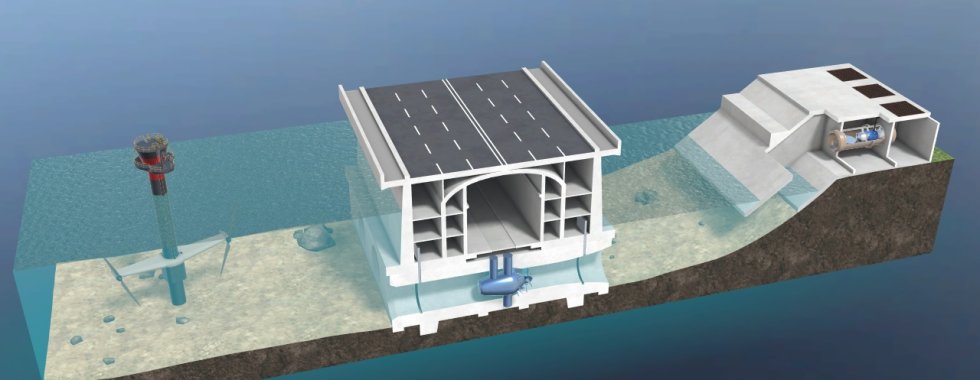
Marine Current Power and Ocean Thermal Energy
3 min read
Marine Current Power
Ocean currents all over the globe carry a huge amount of energy. They are stronger than any river flow and therefore represent a stable, ecologically friendly and cheap energy source. Many countries are considering harnessing this energy.
Ocean currents are caused by uneven heating of ocean water by the Sun. With some currents, contributing factors can be salinity, water density, seabed topography and the Earth’s rotation. The currents are relatively stable and keep flowing in one direction. The best-known ocean current is the Gulf Stream. Between Florida and Cape Haterras (map), the stream travels at about 3.2 km/h near the ocean floor and 8 km/h on the surface. There are many other ocean currents, like the California Current or the Humboldt Current, to name just a few.
Although ocean currents are slower than the winds, they carry much more energy due to the much higher density of water. Harnessing this energy is currently being considered by the USA, Japan and China. Various turbine concepts are being developed, most of which are in principal, reminiscent of classic wind turbines. They are rotating at a much slower rate however so fish can pass through them unharmed.
Only one thousandth of the energy of the Gulf Stream can supply Florida with 35 per cent of its electrical needs.
OTEC — Ocean Thermal Energy Conversion System
Video: OTEC system diagrams. Diagram of a closed cycle OTEC system (left); Diagram of an open cycle OTEC system (right).
The world’s oceans contain huge amounts of thermal energy. The difference between surface and lower layer temperatures can be exploited to produce electrical energy. This can be achieved using the so-called Ocean Thermal Energy Conversion system (OTEC) with an open or closed cycle. In the closed Rankine cycle, a heat exchange medium (e.g. ammonia) is used which evaporates upon contact with the warmer surface water, whereby it is forced to drive a low pressure turbine. After passing through, it is cooled down again by the cool ocean water and condenses again. In the open cycle, the working medium is the ocean water itself evaporating at lower pressure. After passing through the turbine, it condenses and since salt has been separated in this process, it can be used as drinking water. A special arctic variant of the OTEC system takes advantage of the thermal difference between the 2 °C seawater under the ice and the −50 °C ambient air.
The first the idea of using ocean temperature differences for generating electricity was proposed by J. Verne in his novel Twenty Thousand Leagues Under the Sea.







![Map of ocean temperatures [°C]. Map of ocean temperatures [°C].](/cache/img/6-1/data-web-img-water-energy-marine-current-power-and-ocean-thermal-energy-mapa-tepelna-energie-mori.fitbox.x455.y2090.r0.q75.nr0.me2.jpg)





